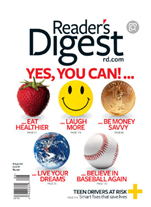Fill in each blank
with a proper word chosen from the box. Each word can be used only once. Note
that there is one word more than you need.
|
A.
determined B. entitled C. officially
D. seeking E. version F. establishment G. rejected H. various I. completely J.
priced K. absorbed
|
The
Historical Change of Reader's Digest

During World War I, Mr. DeWitt Wallace was wounded in a battle. During his recovery in the hospital, he read a lot of magazines and {#blank#}1{#/blank#} a lot of interesting information. At the same time, he also found that few people had time to read so many magazines that he realized the idea of excerpting (摘录) these articles and publishing them.
He was {#blank#}2{#/blank#} to publish a pocket magazine they called Reader's Digest with his wife Lila Acheson. They opened an office downstairs in an illegal hotel in Greenwich Village, New York, and spent only $5,000 in capital and began {#blank#}3{#/blank#} subscribers. After a period of hard work, the first volume was {#blank#}4{#/blank#} published on February 5, 1922. Its purpose is to inform the readers in daily life and give the readers entertainment, encouragement and guidance. The first article, {#blank#}5{#/blank#} How to Stay Young Mentally, was one and a half pages long.
In 1920, he put {#blank#}6{#/blank#} selected articles into Reader's Digest samples and displayed them to major publishers in the United States. He hoped that someone would be willing to publish them, but they were all {#blank#}7{#/blank#}. Mr. Wallace did not give up and decided to publish it himself. He worked at home with his wife, and finally published the first issue of Reader's Digest in February 1922. The first was printed in 5,000 copies, {#blank#}8{#/blank#} at 25 cents, and sent to 1,500 payment subscribers by mail. By 1935, the circulation of Reader's Digest had reached one million copies.
The Chinese {#blank#}9{#/blank#} of Reader's Digest was first published in March 1965. The first editor-in-chief was Lin Taiyi, the daughter of Mr. Lin Yutang, master of literature. In November 2004, Reader's Digest and Shanghai Press and Publication Bureau announced the {#blank#}10{#/blank#} of a long-term publishing cooperation.